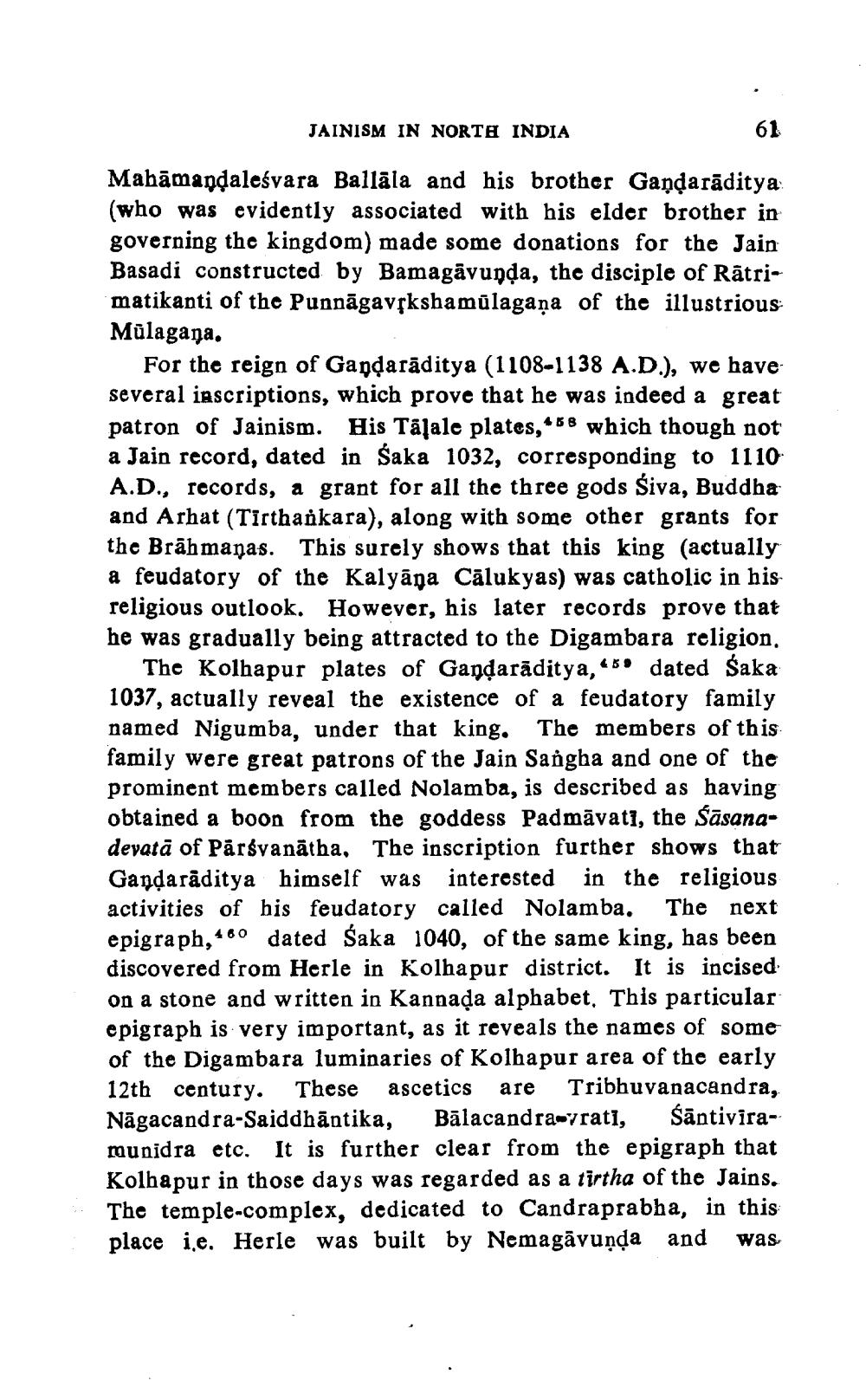________________
JAINISM IN NORTH INDIA
Mabāmandalesvara Ballāla and his brother Gaņdarāditya (who was evidently associated with his elder brother in governing the kingdom) made some donations for the Jain Basadi constructed by Bamagāvunda, the disciple of Rātrimatikanti of the Punnāgavřkshamūlagaņa of the illustrious Mülagana,
For the reign of Gandarāditya (1108-1138 A.D.), we have several inscriptions, which prove that he was indeed a great patron of Jainism. His Tālale plates, *68 which though not a Jain record, dated in Saka 1032, corresponding to 1110 A.D., records, a grant for all the three gods Śiva, Buddha and Arhat (Tirthankara), along with some other grants for the Brāhmaṇas. This surely shows that this king (actually a feudatory of the Kalyāna Cālukyas) was catholic in his religious outlook. However, his later records prove that he was gradually being attracted to the Digambara religion.
The Kolhapur plates of Gandarāditya, 450 dated Śaka 1037, actually reveal the existence of a feudatory family named Nigumba, under that king. The members of this family were great patrons of the Jain Sangha and one of the prominent members called Nolamba, is described as having obtained a boon from the goddess Padmāvati, the Śāsanadevatā of Pārsvanātha, The inscription further shows that Gandaråditya himself was interested in the religious activities of his feudatory called Nolamba. The next epigraph, 460 dated Śaka 1040, of the same king, has been discovered from Herle in Kolhapur district. It is incised on a stone and written in Kannada alphabet. This particular epigraph is very important, as it reveals the names of some of the Digambara luminaries of Kolhapur area of the early 12th century. These ascetics are Tribhuvanacandra, Nāgacandra-Saiddhāntika, Bālacandra-vrati, śāntiviramunidra etc. It is further clear from the epigraph that Kolhapur in those days was regarded as a tirtha of the Jains. The temple-complex, dedicated to Candraprabha, in this place i.e. Herle was built by Nemagāvuņņa and was




